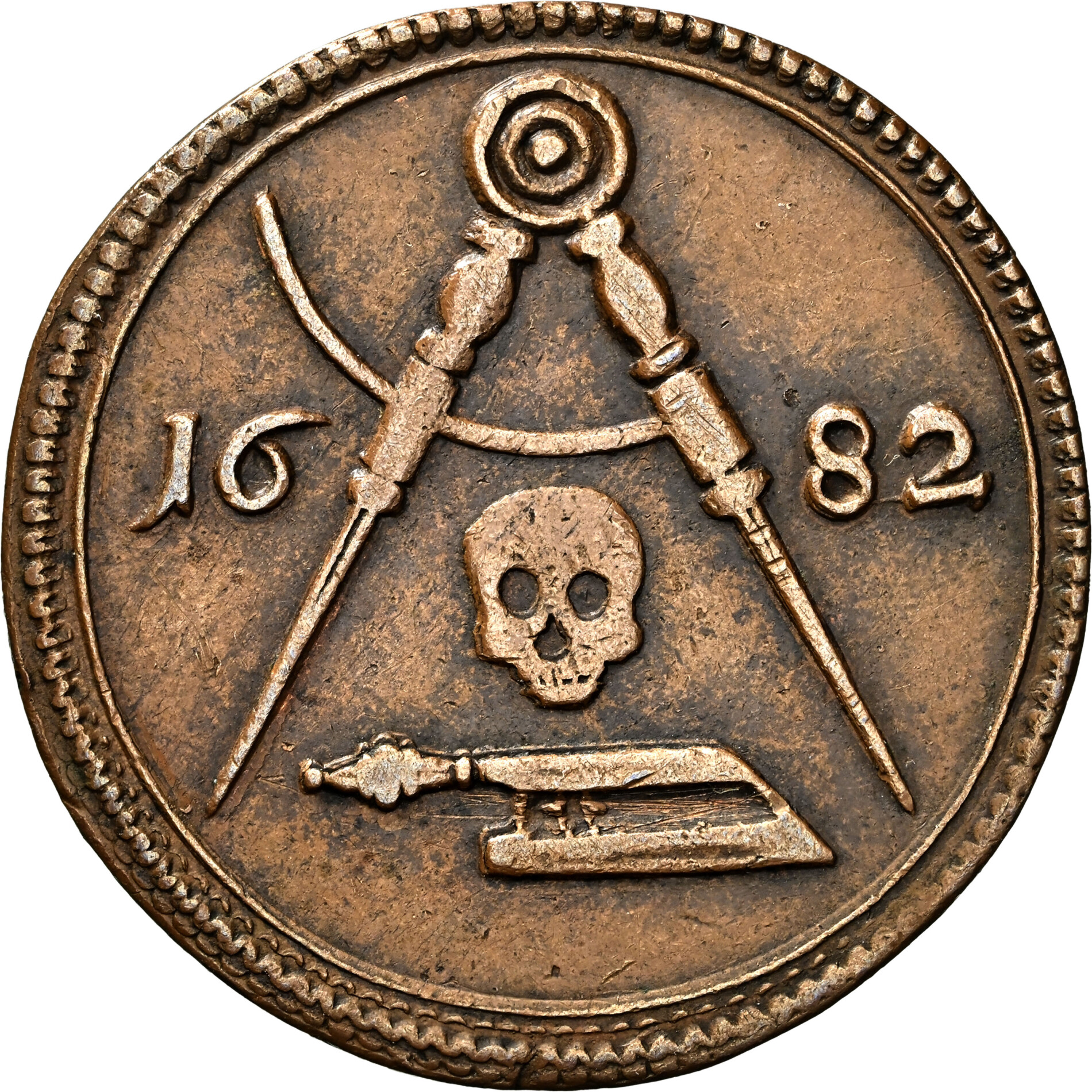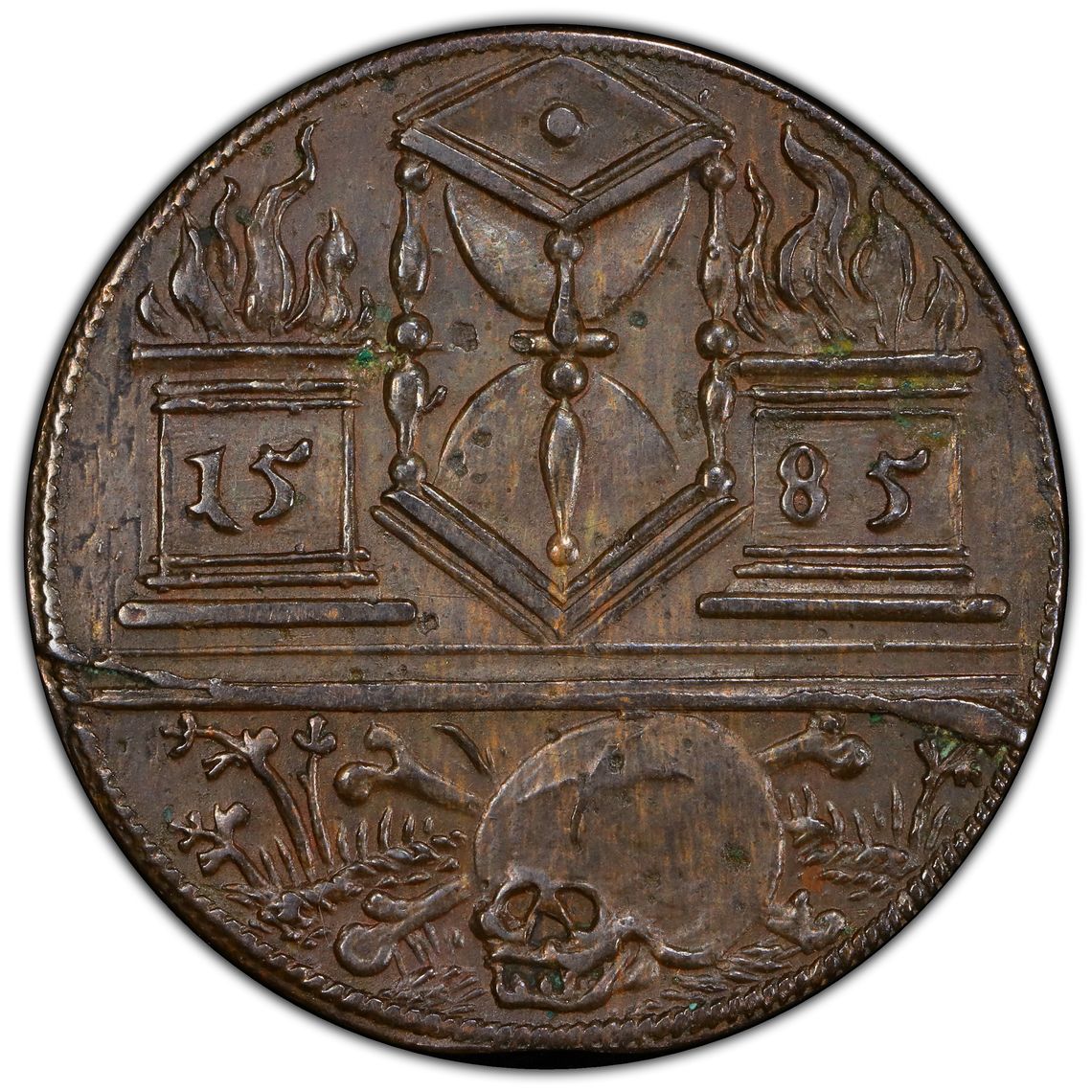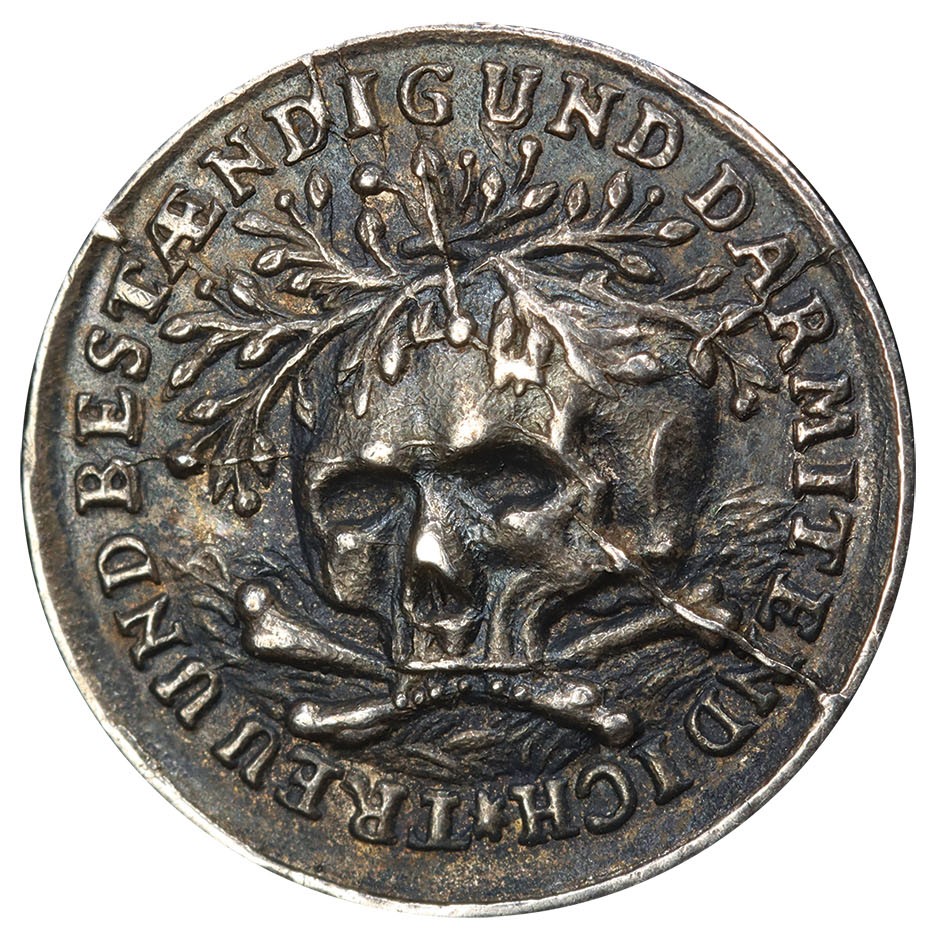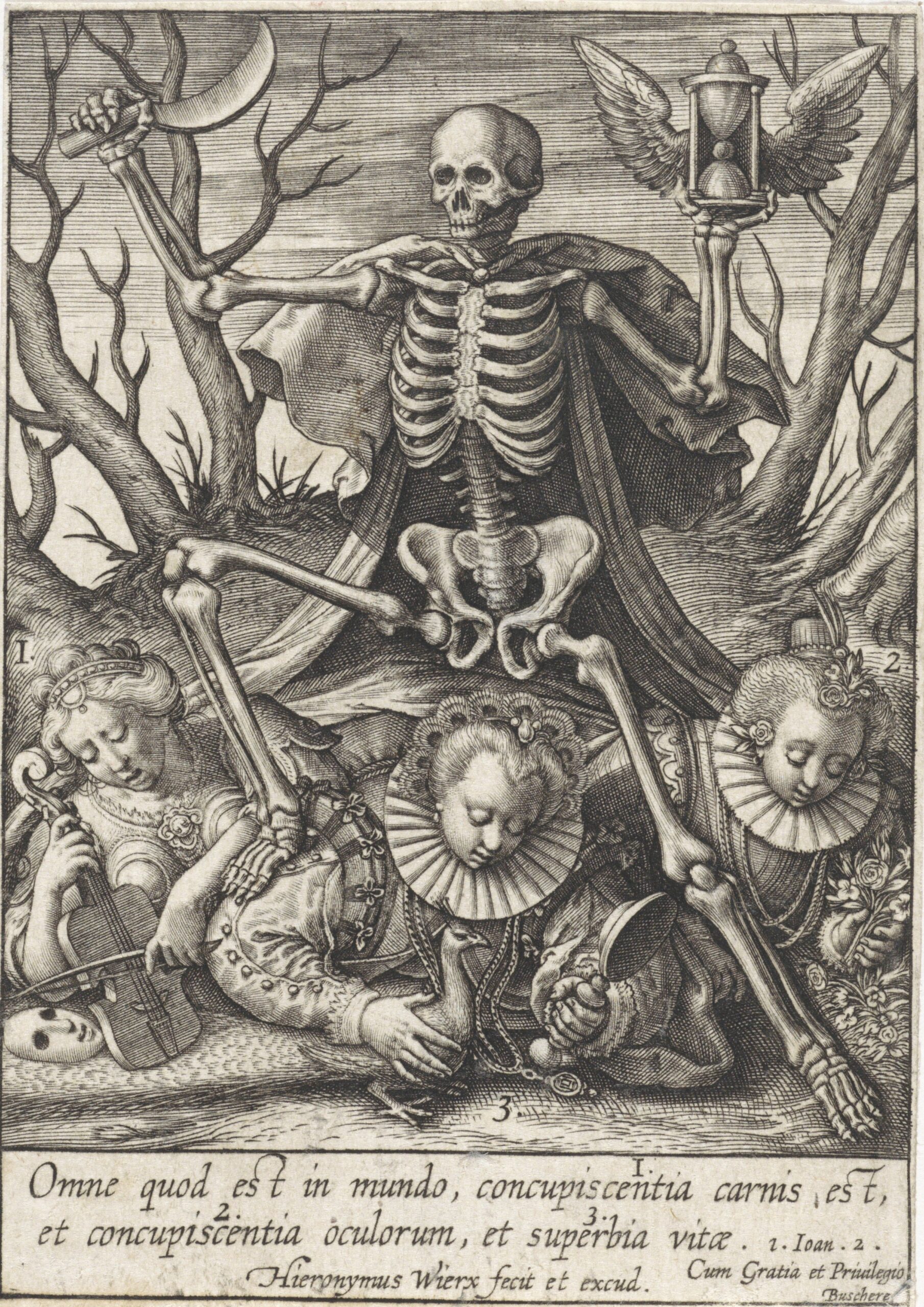
Very Rare 1684 Surgeon’s Guild Admission Medal – “Grim Reaper”
Very Rare 1684 Surgeon’s Guild Admission Medal – “Grim Reaper”
Item #CC-0788 | Very Rare 1684 Surgeon’s Guild Admission Medal – “Grim Reaper”
Made in: Amsterdam
Grade: AU+
Weight: 30.37 grams
Dimensions: 43 mm
Composition: Brass
For details on a similar medal sold in 2021 by Stacks Bowers, visit: https://auctions.stacksbowers.com/lots/view/3-TESRS/skulls-skeletons-netherlands-amsterdam-surgeons-guild-cast-brass-toegangspenning-admission-token-nd-ca-1740-80-choice-extre
Description: This beautiful and extremely rare medal was issued in the late 17th century by the Surgeon’s Guild of Amsterdam to surgeons who passed their exams. This particular specimen is engraved with the name of Willem Evers and dated 1766.
The design of the obverse depicts a beautiful floral arrangement in a vase with text above in Latin that reads “Hortus Medicus“, which translated into English means “Medicinal Garden”. Below the vase is a ribbon with the date “1684” and below the date is the name “Willem Evers 1766”.


 The design of the reverse depicts a skeleton standing amongst lilies or flowers holding a sickle in its right hand and holding an hourglass on a pedestal in its left. The use of skeletons, skulls and crossbones, hour glasses, and sickles were commonly used symbols on funeral and communion tokens, casting counters, guild medals, apothecary items, and a wide range of religious items. This symbolism is typically referred to as Memento Mori, which is an ancient and famous Latin term for “Remember you will die“.
The design of the reverse depicts a skeleton standing amongst lilies or flowers holding a sickle in its right hand and holding an hourglass on a pedestal in its left. The use of skeletons, skulls and crossbones, hour glasses, and sickles were commonly used symbols on funeral and communion tokens, casting counters, guild medals, apothecary items, and a wide range of religious items. This symbolism is typically referred to as Memento Mori, which is an ancient and famous Latin term for “Remember you will die“.
Every surgeon who worked in Amsterdam between around 1620 and the end of the 18th century received an attendance medal when he passed his surgeon’s exam. Attendance medals were actually the membership medals of the Amsterdam surgeons’ guild and could be used to check attendance at guild meetings. From 1684 onwards, surgeons also received a hortus medal, as an admission ticket to the Hortus Medicus, which was a medicinal garden that exists to this day. Here is a link to the garden: https://www.amsterdam.info/sights/botanical-garden/.
In the 17th and 18th centuries, the Waag on the Nieuwmarkt in Amsterdam was the epicenter of the Amsterdam surgeons’ guild. Here, the guild held their meetings as well as anatomy lessons in the “Theatrum Anatomicum” or anatomical theater. The ‘praelector anatomiae’ (anatomy instructor, lecturer, or professor) took care of the guild education and gave anatomy lessons in the theater, using bodies of death row inmates, criminals, or deceased people from the Amsterdam hospitals.
Surgeons who earned the Hortus Medicus medals were allowed to take lessons in botany. These lessons were given by the praelector in the ‘Hortus Medicus’, a garden where all kinds of exotic plants with medicinal properties were cultivated.
A collection of 17th and 18th century medals of the Amsterdam surgeons’ guild has been preserved by the Dutch Society for Surgery, totaling 230 copies. This collection is the largest and most diverse collection of surgeon’s medals worldwide.
Why was Memento Mori so Popular?
 In early Christianity, the expression “memento mori” developed with the growth of Christianity, which emphasized divine judgement, heaven, hell, and the salvation of the soul in the afterlife. Memento mori is a Latin phrase, which literally means “Remember death” or “Remember that you die“. The 2nd-century Christian writer Tertullian claimed in his Apologeticus, that during a triumphal procession, a victorious general had someone standing behind him, holding a crown over his head and whispering: “Respice post te. Hominem te esse memento. Memento mori.” Which means “Look after yourself. Remember you’re a man. Remember you will die.”
In early Christianity, the expression “memento mori” developed with the growth of Christianity, which emphasized divine judgement, heaven, hell, and the salvation of the soul in the afterlife. Memento mori is a Latin phrase, which literally means “Remember death” or “Remember that you die“. The 2nd-century Christian writer Tertullian claimed in his Apologeticus, that during a triumphal procession, a victorious general had someone standing behind him, holding a crown over his head and whispering: “Respice post te. Hominem te esse memento. Memento mori.” Which means “Look after yourself. Remember you’re a man. Remember you will die.”
To the Christian, the prospect of death serves to emphasize the emptiness and fleetingness of earthly pleasures, luxuries, and achievements, and thus also as an invitation to focus one’s thoughts on the prospect of the afterlife.
Memento mori is an artistic or symbolic metaphor that serves as a reminder of the inevitability of death and the eternal nature of the human spirit. The most common motif is a skull accompanied by one or more bones. The ‘skull and cross bones’ can be seen on some Roman and early Christian tombs, the Knights Templar used it around the 13th century and pirates used it during the Golden Age of Piracy on their flags known as the “Jolly Roger”.
For more information on the history of memento mori symbols, see our article titled “An In-Depth Look Into Saint Lambert Communion Tokens at https://commodorecoins.com/2023/11/an-in-depth-look-into-saint-lamberts-communion-tokens/
For examples of other Surgeon’s Guild medals, visit: https://eremetaal.ntvg.nl/penningen-als-bronmateriaal?page=7
For more information on other memento mori type coins and tokens, see the article written by Joshua Scott for the PCGS Market Report titled “Grave Matters” here: https://www.pcgs.com/news/grave-matters
In stock
$4,250.00

